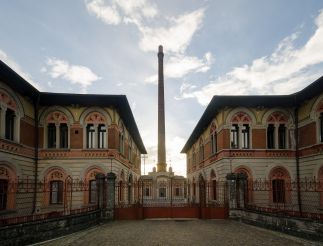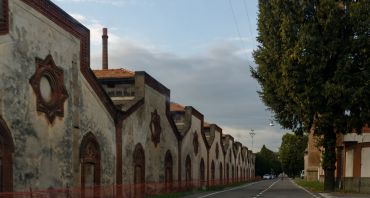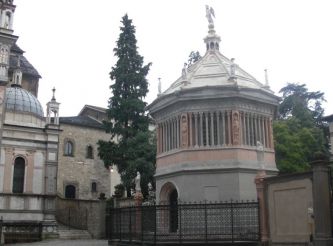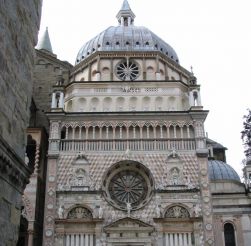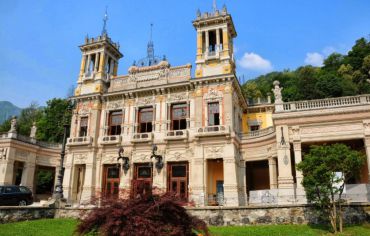Crespi d'Adda, Capriate San Gervasio
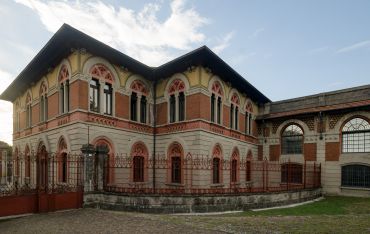
Crespi d'Adda is a small industrial town in Italy that at first glance doesn't seem to be anything special. Ideal in terms of planning and safety, it was built as a settlement for workers of a weaving mill that is more than a hundred years old now. The descendants of the first workers still live here. At the time of the construction, the town had a state-of-art infrastructure and technology and looked somewhat utopian. Now it is inscribed on the UNESCO World heritage list.
History of Crespi d'Adda
In 1875, the famous textile magnate Cristoforo Benigno Crespi bought land in this area to build the factory. On the 25th of July, 1878, the construction was finished. After that, the erection of dwellings for workers and their families began. As the town received first inhabitants, its infrastructure began to develop. By 1886, a bridge was built across the Adda river.
From 1886 to 1898, there were around 50 single-family houses. By 1891, the town had a laundry and a school, a doctor and a parish priest, with all the houses having been electrified. In 1893, the construction of a church was finished. The year 1894 marked the end of the construction of the Villa Crespi, a family residence, that had a telephone line with Milan. By 1904, Crespi d'Adda had a hospital and its own hydroelectric power station. Four years later, a cemetery and a mausoleum for the Crespi family appeared.
A little bit later the town could already boast a theatre, saunas, a fire-station, luxurious villas for the management personnel of the factory. The settlement actively developed until 1929, when the Great Depression struck the country. Silvio Benigno Crespi, who at that time was running the business, had to sell the plant in 1936 because of tight control and high taxes imposed by the government. The company was alternately owned by Legler (1976-1989) and Polli (1989-2003), gradually reducing production and the number of employees. At the end of 1995, the town became a UNESCO World Heritage Site. In 2003, the factory was closed, but as soon as 2013 it was bought by the Odissea company and is currently awaiting a new round of its history.
Architecture and sights
Crespi d'Adda sits on a river bank. Most workers' houses, located in several parallel streets, were built in the English style. The town's planning is rational and geometrically correct if you look at the village from above. The styles of buildings are quite diverse: classicism, romanticism, neo-Gothicism, and eclecticism. The main materials used were brick and pebble. The houses were decorated with additional ornaments. Here are the main buildings of Crespi d'Adda.
- Factory. The main entrance is behind a wrought iron gate fit between two-story buildings. Opposite the gate rises a huge flue. The main premises of the plant are one-storey and stretch to the south along the river. Their facades are boringly similar: a cogged roof and various friezes and bas-reliefs.
- Workers' houses. Square-shaped two-story houses were as a rule inhabited by 1-2 families. They were surrounded by a garden and separated from each other by a small fence. The houses of foremen and factory managers are also two-story, although they are richer and more beautiful and located not that symmetrically. All buildings resemble houses in England, where the son of the first factory owner studied.
- Villa Crespi. This is the main landmark of the town. Together with the flue of the factory, the castle tower (50 m high) can be spotted from a long distance, given the flat terrain. The principal part of the medieval style castle is made of bricks. The project belongs to the architects Ernesto Pirovano and Pietro Brunati. The tower offers a fascinating panoramic view of the surrounding area.
- Church. The building, which later played an important role in the life of the community, was designed by the architect Pietro Brunati, with its interior decoration being the work of Luigi Cavenaghi. This is an accurate but a bit reduced in size copy of the Church of Santa Maria di Piazza in Busto Arsizio, the birthplace of the factory's founder. Although the exterior is simple, the inside decoration of the temple strikes with beauty. Frescoes, cherubs, medallions, and an octagonal dome depicting a starry sky.
- Cemetery and mausoleum. Over the graves of workers loom small stone crosses with photos and years of life. The burial vault of the Crespi family has monumental pyramidal structure. One may think that it belongs to a king at least. The mausoleum has 3 levels, galleries, stairs, the tomb itself and various decorations. The architect Gaetano Moretti won the competition and was commissioned the construction of the vault.
- Taccani Hydroelectric Power Station. It represents a mix of Art Nouveau and oriental motifs. The architect who worked on the mausoleum was also the author of the design of the station that still functions.
How to get there
The unusual industrial town of Crespi d'Adda is located in the commune of Capriate San Gervasio in Lombardy, northern Italy, only 35 km from Milan. Bus is the most convenient transport to get there. It sets off from the metro stations Cologno Nord or Gessate, line M2, and runs to the town of Trezzo sull'Adda. You should get off at the Via Biffi stop and change for the buses that follow the V or Z10 routes to Piazza Veneto in Crespi D'Adda. This the place of the Cultural Association where all excursions around the town start. The address of the association: Piazzale Vittorio Veneto, 1.
Working hours: every day, except for public holidays. Excursions should be pre-booked. Phone number: (+39) 02 90987191.
Entrance fee: the cost of an excursion for a group of up to 10 people is 6 euros per person. Admission is free for children under 10 years. Information as of March 2018.



